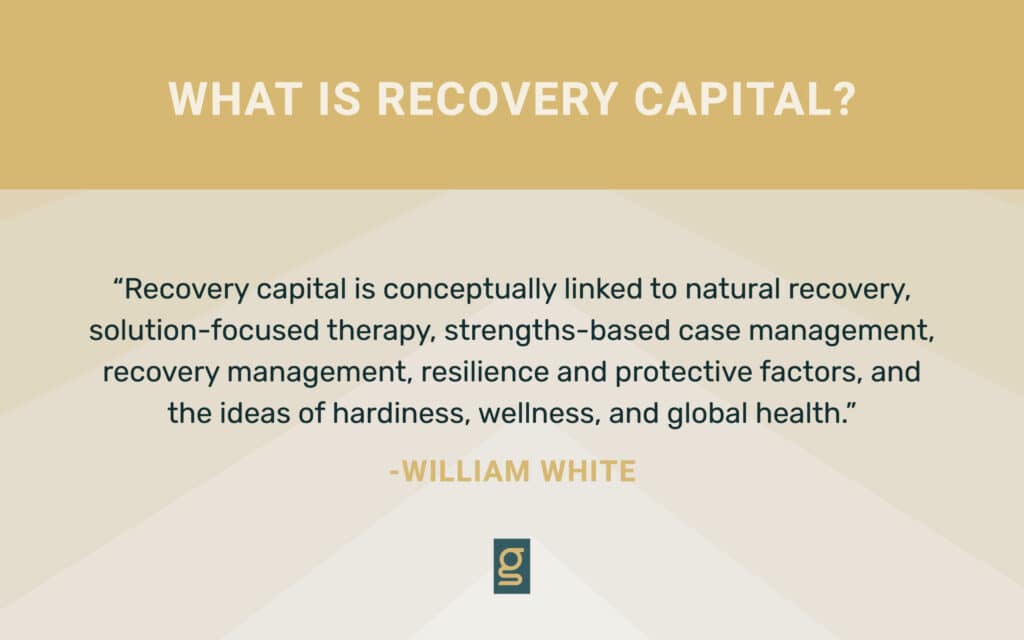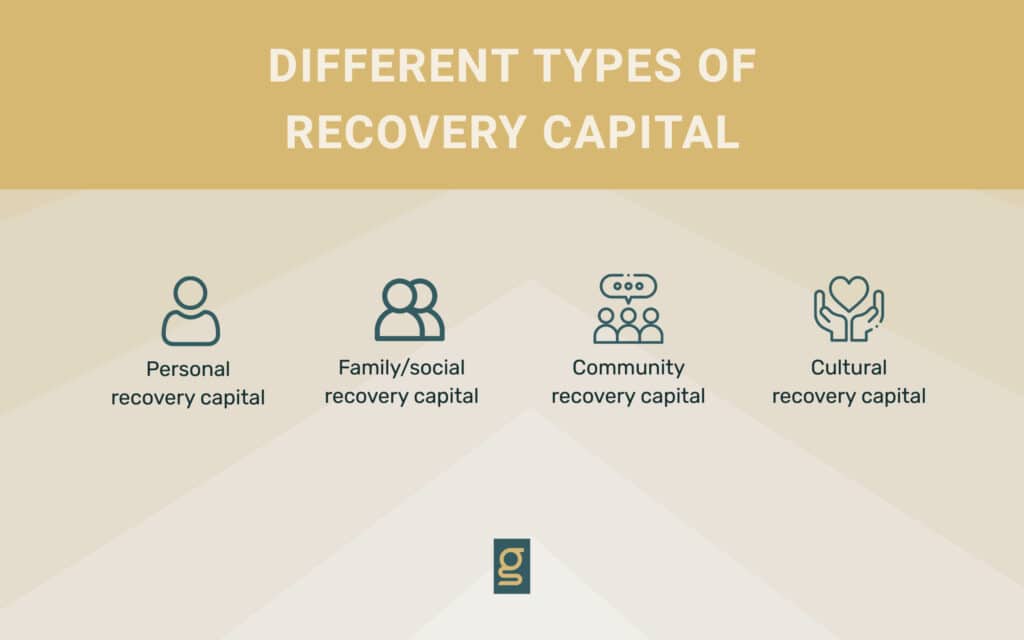When it comes to addiction recovery, there is no one-size-fits-all solution. There are a number of individual factors that determine the right type of addiction treatment and risks when a person leaves treatment. This means it can be difficult to determine successful recovery outcomes. However, there is a formula that researchers say greatly influence the success of a person’s recovery: it’s called recovery capital.
What is Recovery Capital?
In their 1999 book Coming Clean: Overcoming Addiction Without Treatment, sociologists Robert Granfield and William Cloud introduced the concept of “recovery capital.” Granfield and Cloud argue that what individuals bring to the table heavily influences someone’s ability to initiate and sustain recovery from substance use disorder. Put simply: it’s the sum total of a person’s “internal and external assets” that determine how far they will ultimately go in recovery.
Recovery capital or “recovery capacity,” as researcher William White refers to it, doesn’t simply vary from person to person. In fact, the ability to navigate addiction recovery can be hugely different for the same person at various points in their life. According to White, recovery capital is directly connected to:
“natural recovery, solution-focused therapy, strengths-based case management, recovery management, resilience and protective factors, and the ideas of hardiness, wellness, and global health.”
With all of these dimensions at play, recovery capacity becomes as complex as it is unpredictable. In other words, the exact range of resources someone needs in recovery depends on how severe their substance abuse problem already is, in addition to the range of resources they currently have at their fingertips. If someone is heavily addicted to a given substance but has scant few recovery resources available to them, they are more likely to benefit from professional treatment as well as post-treatment support programs and services. White, however, believes the inverse is true, too: if that same person has a high degree of recovery capital, they may require a smaller number of resources to achieve long-term recovery.

What are the categories of recovery capital?
White identified four different categories of recovery capital, including personal, family/social, community and cultural:
- Personal recovery capital revolves around an individual’s physical dynamics as well as their human ones. Physical capital includes any resources that help someone to fulfill their basic needs, such as healthcare, finances, clothing, food, shelter, and transportation, among others. Human capital involves someone’s personal values, skills, interpersonal qualities, education, knowledge and their ability to navigate challenging situations. It also includes the perception of someone’s past, present, and future, not to mention their sense of meaning and purpose in life.
- Family/social recovery capital involves resources as they relate to relationships on an intimate level, as well as family and social ones. White further defined family/social capital as the “willingness of intimate partners and family members to participate in treatment,” as well as the access to sobriety-based fellowship and/or connections to institutions such as school, church, workplace and other community organizations.
- Community recovery capital encompasses a wide range of resources related to addiction recovery. White maintains that any attitudes, policies, or service that helps an individual to overcome their substance use disorders qualifies as community resource capital. They can include the following:
-
- Visible and diverse recovery role models on a local level
- Efforts to reduce the stigma around addiction and recovery
- Accessible and diverse recovery mutual-aid resources
- Community support institutions such as recovery centers, treatment alumni associations, sober-living houses, and recovery-minded ministries/churches
- Recovery support resources and early intervention programs, such as employee assistance programs, drug courts, professional assistance systems, and recovery community organizations
- A wide spectrum of addiction treatment resources
-
- Cultural capital resources resonate with individuals’ cultural and faith-based beliefs. White pointed toward Native Americans recovering via the “Indianization of AA” and the “Red Road” as an example, as well as African Americans recovering within faith-based recovery ministries. Cultural capital can also include resources aimed at people of specific faiths like Christianity or Judaism.

White contends that when front-line addiction professionals use recovery capital to specifically shape their strategies and approaches, more people will find and achieve long-term recovery:
- Screening and brief intervention (SBI): programs need to reach people “before their recovery capital is depleted and their substance abuse disorders become severe, complex, and chronic.”
- Outreach: Rather than waiting for people to “hit bottom” before seeking professional help, aggressive programs of community outreach are necessary.
- Regular assessment: Recovery capital needs to be regularly assessed through a strengths-based approach to alcohol and other drugs (AOD) problem resolution. Since recovery capital fluctuates over time, professionals can better assess where someone is, capital-wise. This is key, White believes, since someone’s ability to end their substance abuse is directly connected to problem severity and recovery capital.
- RC Matrix: Using a recovery capital/problem severity matrix can help professionals better determine the right course of action for a person entering treatment. (The scale can be found here.)
Summary of Recovery Capital
In essence, recovery capital helps individuals maintain long-term recovery by bolstering the number of available resources they have, as well as expanding the support system around them. With little or no recovery capital, people invariably find it difficult, if not impossible, to achieve sobriety. By increasing someone’s recovery capital, however, there’s no telling just how far they’ll go on their recovery journey.



 Steve Carleton
Steve Carleton 
